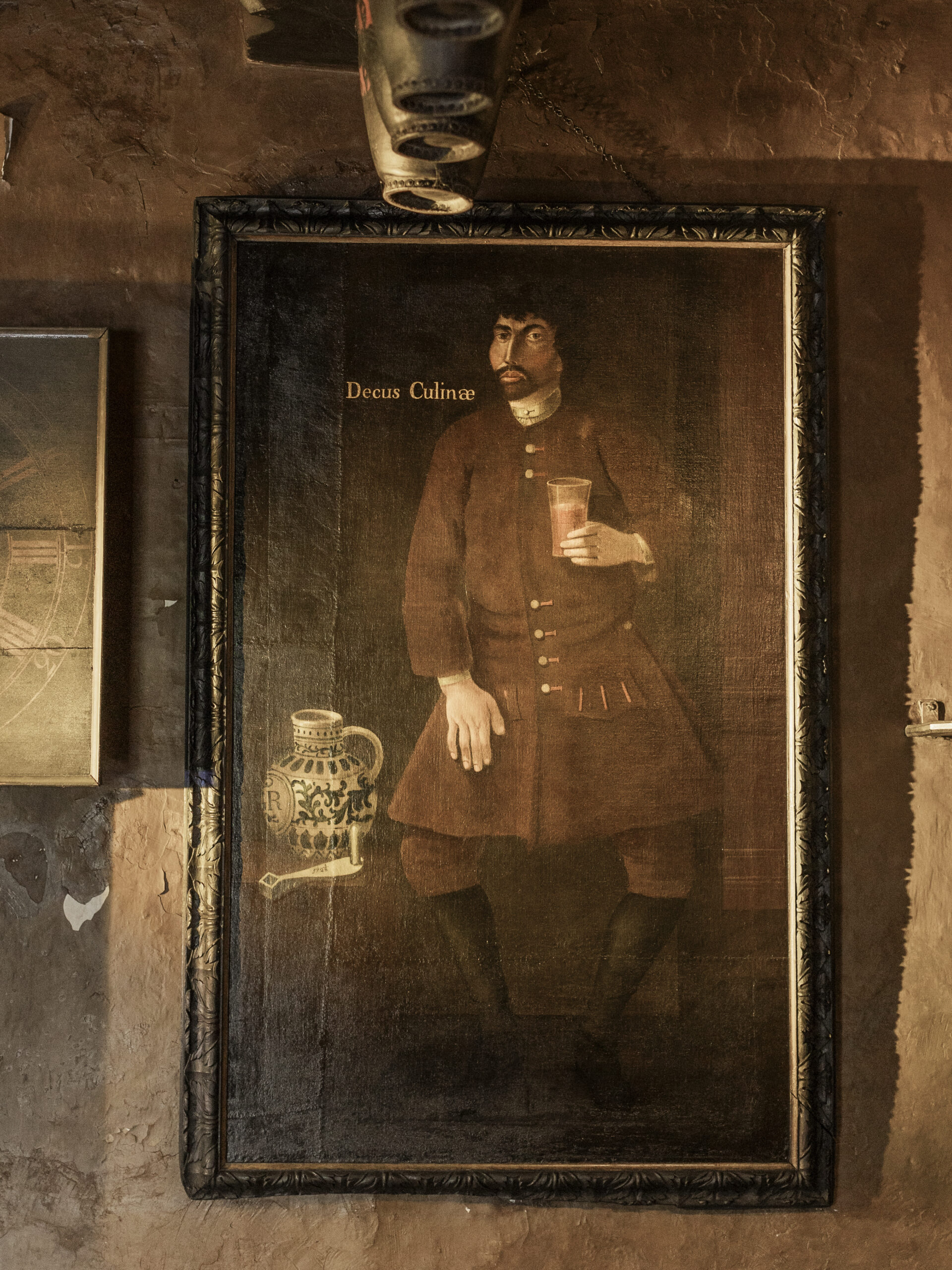
Mr. Whitmore, John Wilton (c.1691-1751), 1728/29
John Chu
A rare ‘Chronology’ of servants who worked at Chirk Castle in Wales, handwritten late in the eighteenth-century, contains one stand-out entry. It reads:
John Wilton – a deformed Cripple taken into the Family by Sir Richard Myddelton and kept for Charity from his Youth to his Death which happen’d in October 1751 – near sixty years old.
Unlike the other entries, simply noting a name, role and wage, Wilton’s status was sufficiently exceptional for his entry to warrant this additional biographical detail. No remuneration is documented. Doubly unusual is the fact that we can put a face to this name. Wilton’s likeness was captured in a full-length, life-sized portrait, which still hangs in the castle’s Servant Hall, now in the care of the National Trust.

Inscribed with the date 1728/9, it was painted for two guineas by a Mr. Whitmore; a travelling painter-decorator who also carried out various other painting and gilding jobs around the property. By then, Chirk had passed to a cousin, Robert Myddelton, after the failure of Sir Richard’s line, so the commission conforms to the tradition of portraits of long-serving country house servants as symbols of loyalty and continuity. Myddelton patriarchs had come and gone, but Wilton remained. A mock-heroic inscription, ‘Decus Culinae’, meaning ‘glory’ or ‘pride of the kitchen’ in Latin, gives a clue about where Wilton worked in the castle. A detachable winder on the table to his right could suggest he was responsible for winding clocks or, more likely, given the inscription, for manning a mechanical roasting jack. The glazed pitcher at this side, from which he has presumably charged his glass, incorporates the royal cypher, extending the theme of loyalty to the Myddelton’s adherence to the relatively new – and still contested – Hanoverian regime.
Recent conservation work to remove layers of discoloured varnish and soot from the painting was a revelation. It showed not only the architectural setting in the picture – a plain service space leading through a doorway to an elite, panelled and marble-tiled interior – but also made plain the cause of Wilton’s disability. Whereas it had been assumed Wilton was depicted seated, it was now clear that his legs were bowed at an acute angle at the knee, presumably affecting his mobility. This written and visual evidence raises important questions about Wilton’s status at Chirk: among the servants but not of them. While the ‘Chronology’ emphasises his position as the recipient of Myddelton charity, it clear that Wilton was at work in the castle for which payment was made in-kind. Chirk accounts in the National Library of Wales consulted by National Trust curator, Karen George, alongside the conservation work, revealed that costs were covered for his board, tools for his use in the kitchen, and clothing – including the linen bought in 1728 for his mother to make his shirts.
Centuries before the emergence of the welfare state, was it unusual for country houses to adapt their service structures when needs arose in the local population? And, in the absence of evidence documenting Wilton’s perspective, or those who may have occupied a similar position, how can we access a less top-down and more intimate insight on their lives? Here, perhaps, Whitmore’s portrait offers a further clue. In this depiction of one working man from the hand of another, albeit as a commission for the head of a household, a strong sense of character emerges from the face returning our gaze. Steely and probing – and something other than a passive recipient of charity.
Further reading
- French, Anne and Giles Waterfield, Below Stairs: 400 Years of Servants’ Portraits (London: National Portrait Gallery, 2003).
- Monaghan, Annabelle and Karen George, ‘The Full Picture’, iConnect Magazine (Summer 2024), pp.20-23.
- National Trust Collections online entry: https://www.nationaltrustcollections.org.uk/object/1171169
